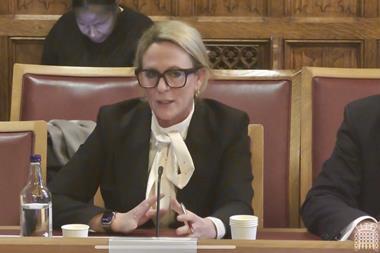Experts say the mega loss is here to stay
The severity and frequency of losses will significantly increase, according to experts in the industry.
The summer floods were a wake-up call to the insurance industry that the magnitude of risk is changing. Previous agreements between the industry and government
But new realities, including global warming, show the frequency will likely become one in 20 years.
At a recent conference for loss adjusters, Geoff Piggot, regional claims manager at Gen Re, said there were a number of reasons why the industry would start to get hit with more ‘mega losses’, and environment issues was only the start.
Aside from the possibility of increased flooding, Piggot said environmental issues overall would become increasingly important and would grow the cost of reinstatement. Local authorities could be most at risk as their clauses tended to be very exposed.
Modern construction methods have also been blamed for some relatively recent mega losses including, in part, the massive Buncefield oil explosion in December 2005.
Piggot said: “Themes emerged from Buncefield in terms of material damage, including planning permission issues on some of the losses, and investigations showed some of the machinery was out of alignment.”
The explosion cost an estimated £500m in property losses and affected 400 businesses.
Piggot said the tendency for construction companies to build more lightweight steel structures has been problematic and the use of composite panels was highlighted as the cause of warehouse fires resulting food losses amounting to $750m (£386m) in 2004/2005.
Piggot said the rising costs of commodities hade also impacted claims costs, with a 300% increase in the price of gold over the past few years. He said this could reduce the ability to mitigate loss.
The changing nature of risk was also impacting the ability to handle claims. Issues, such as offices now full of electrical and combustible materials and ineffective sprinkler systems, along with demolition and debris removal costs spiking, had led to an increase in the frequency of mega losses.
As such, loss adjusters are realising they must have the resources in place to accommodate such losses. This is why Crawford & Company recently launched its Strategic Loss Management (SLM) team to deal with major disaster.
“We realised we needed a top-tier, bespoke service product,” said Mark Bass, head of strategic loss management.
Bass said SLM would allow Crawford to be rapid and proactive in mitigation measures, to scope out damage early and develop loss recovery plans and to pre-plan for catastrophic losses.
The company will likely have ample opportunity to use its SLM team, as it’s estimated Crawford tackles about 50 mega loss claims every year.
Hosted by comedian and actor Tom Allen, 34 Gold, 23 Silver and 22 Bronze awards were handed out across an amazing 34 categories recognising brilliance and innovation right across the breadth of UK general insurance.










































